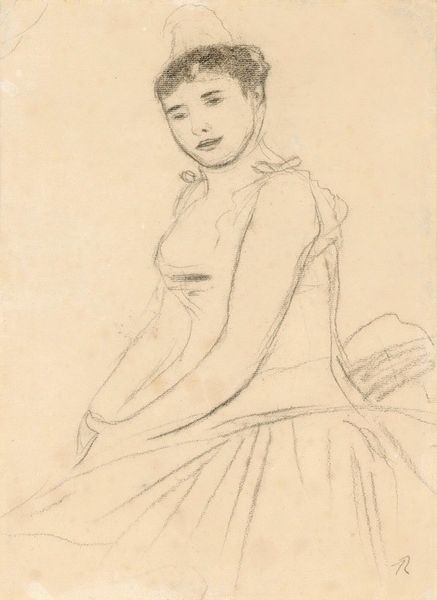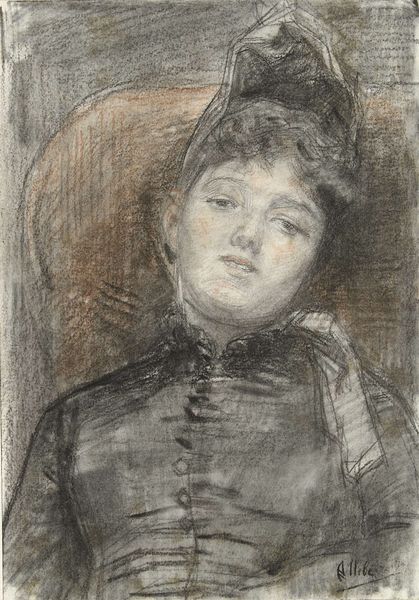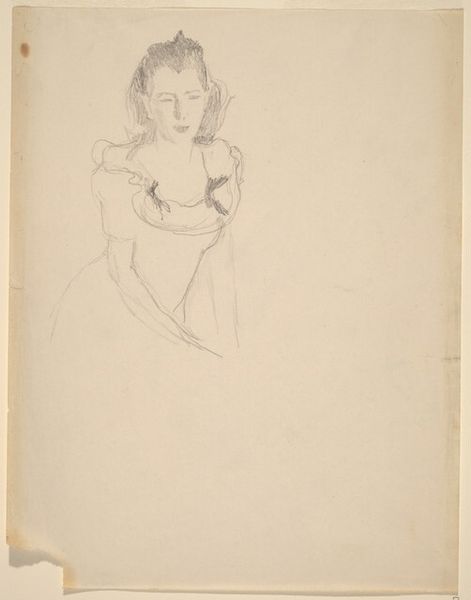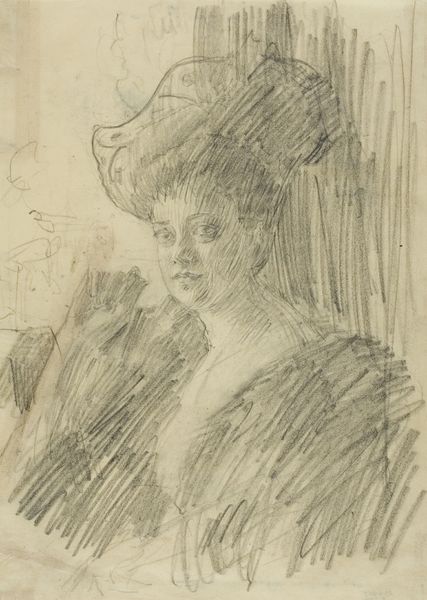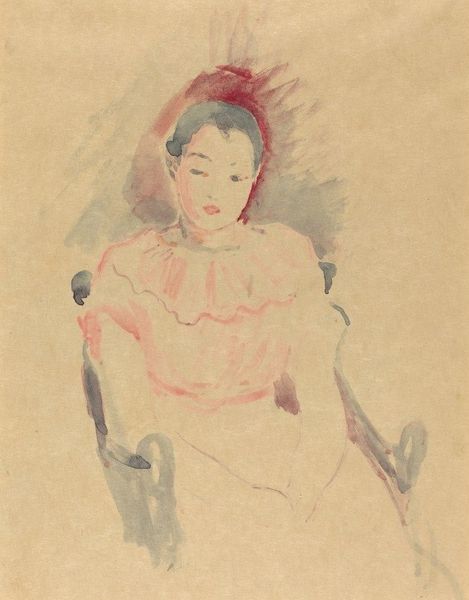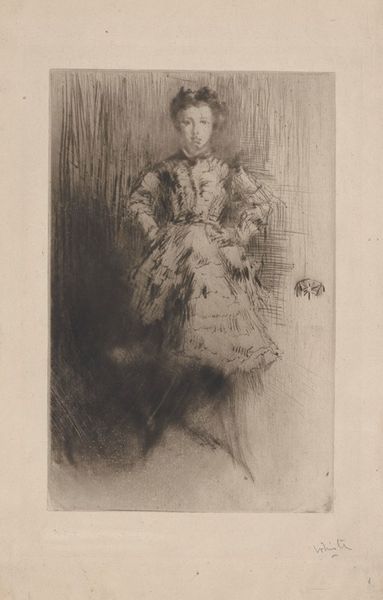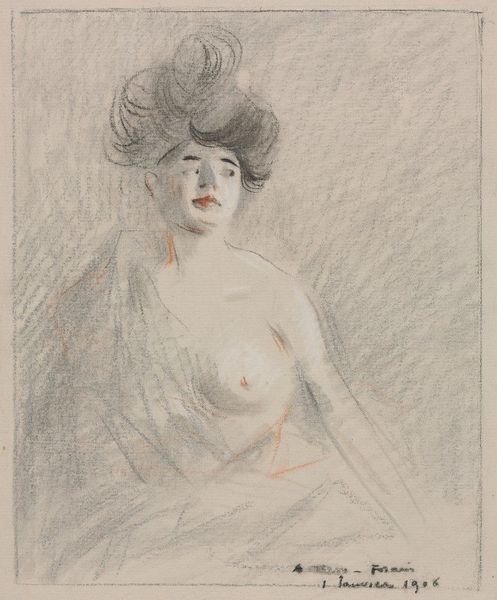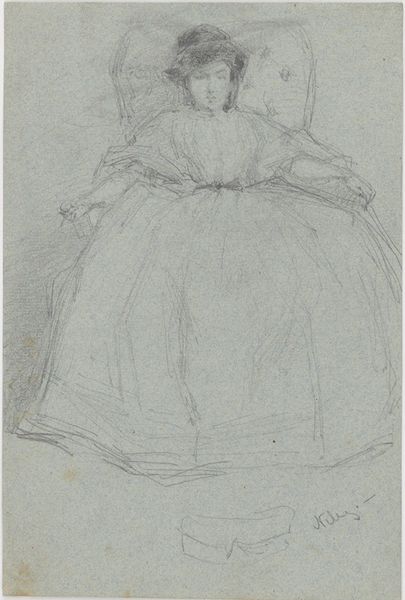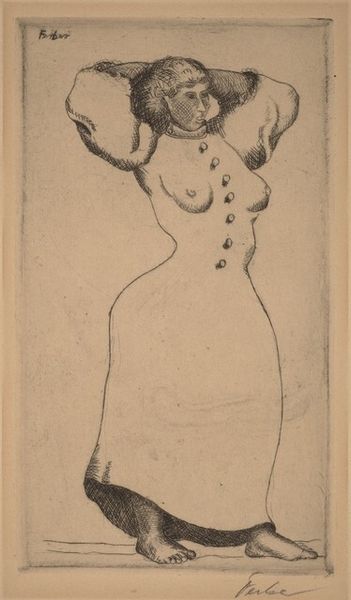
drawing, charcoal
#
portrait
#
drawing
#
impressionism
#
charcoal drawing
#
portrait drawing
#
charcoal
Copyright: Public Domain: Artvee
Curator: This is Pierre-Auguste Renoir’s "Portrait of Séverine," created between 1885 and 1887, executed in charcoal. Editor: There’s an immediate delicacy to it, a certain lightness of being. It feels incredibly intimate, as though we’re catching a glimpse of Séverine in a private moment. Curator: Note how Renoir uses charcoal to build form, relying on soft gradations to model her face and upper body. The visible strokes, especially in the background, maintain a sense of immediacy, characteristic of Impressionist explorations. We should appreciate the technical control behind its seeming informality. Editor: It’s impossible to ignore the implications of portraying a woman like this at the time. Renoir captures something beyond surface-level beauty, I think—there’s a definite air of self-possession. Who was Séverine? How did Renoir position her within the restrictive social conventions of late 19th-century France? Was she wealthy, rebellious, artistic herself? These sorts of things influence the image. Curator: The composition, strictly speaking, emphasizes formal values. Consider the delicate interplay between light and shadow and the expressive contours defining her features. These pictorial devices render her gaze especially powerful. Editor: True. But also, by titling it simply, "Portrait of Séverine", and not “Portrait of Madame [someone]”, for example, what assumptions can we draw about the significance of the individual over her role in marriage? Curator: Perhaps. But what is plainly evident to anyone is the drawing’s internal, pictorial logic, something distinct from external concerns about social status. It's about his unique treatment of light and form—a key part of Renoir’s stylistic innovation. Editor: Certainly the technique stands out, but it would be reductive not to consider this image as reflective of its specific cultural moment, wouldn’t it? Curator: In the end, both the formal qualities of the piece and an understanding of its historical setting enrich our understanding of Renoir’s talent and vision. Editor: Absolutely. It offers insight into the ever-changing representation of women, even within artwork that seems, at first glance, traditional.
Comments
No comments
Be the first to comment and join the conversation on the ultimate creative platform.
